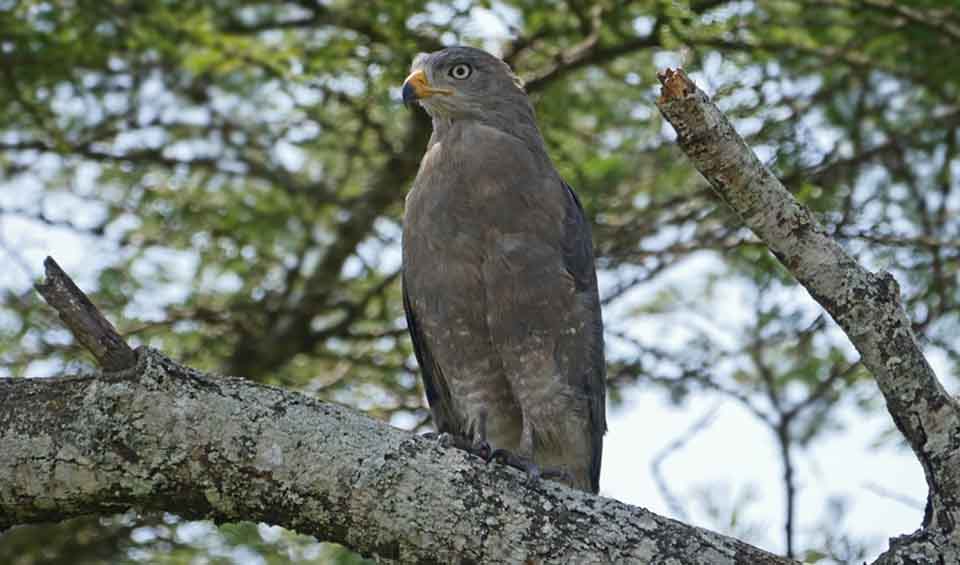Circaetus – Snake eagles
Medium-sized eagles with round heads may strike as owls at the first glance
Despite their name, snake eagles are not exclusively snake eaters, although their diet primarily consists of serpents. These birds of prey have adapted specialized skills to hunt and consume reptiles, including snakes and lizards, which comprise a significant portion of their diet.
Unlike owls, which are part of a different order called Strigiformes, snake eagles belong to the order Accipitriformes. The confusion in identifying them arises because of their facial appearance and behavior, which can sometimes resemble that of owls. One of the most distinctive features of owls is their ability to turn their heads up to 270 degrees, a trait that is often mistakenly waited upon by amateur birdwatchers when observing snake eagles.
Snake eagles possess a stout build with relatively short wings and tails, which allows them to navigate through trees where they hunt for reptiles. They have keen eyesight, which aids in detecting their prey from a perch. Their strong, curved talons are well-adapted for grasping and killing snakes, while their legs and toes are covered with thick scales that help protect them from snake bites.
Habitat is crucial for the survival of snake eagles. They favor wooded savannahs, forest edges, and open woodlands—environments where trees are abundant. Trees not only provide vantage points for hunting but are also essential for nesting. These birds are known to construct their nests out of sticks, often in the fork of a tree, where they lay one to three eggs.
The migratory patterns of snake eagles vary among species. Some species are known to be migratory, undertaking long flights to exploit seasonal abundances of food, while others are sedentary, choosing to remain within a particular range for many years. The migratory species have adapted to the cyclic nature of food availability, whereas the sedentary species have established territories rich enough in food resources to sustain them year-round.
Species in this genus
Short-toed snake eagle
A magnificent migratory bird with long, broad wings and a short tail that sings in the form of musical whistles
Southern banded snake eagle
During courtship displays, they perform spiraling dives and engage in mid-air talon-locking displays with their mates
Western banded snake eagle
As the name suggests, this eagle is all about snakes — venomous or not, it doesn’t care



